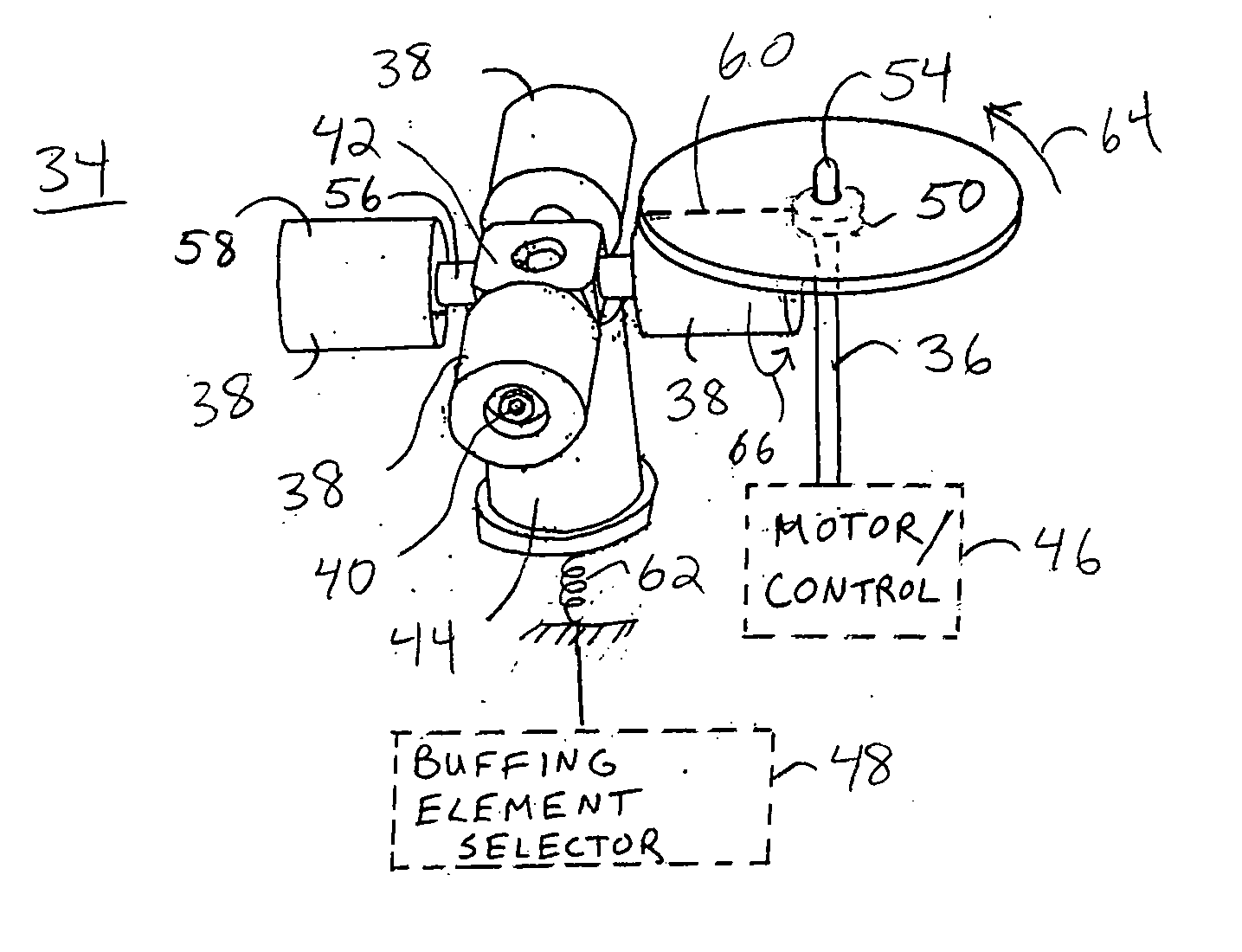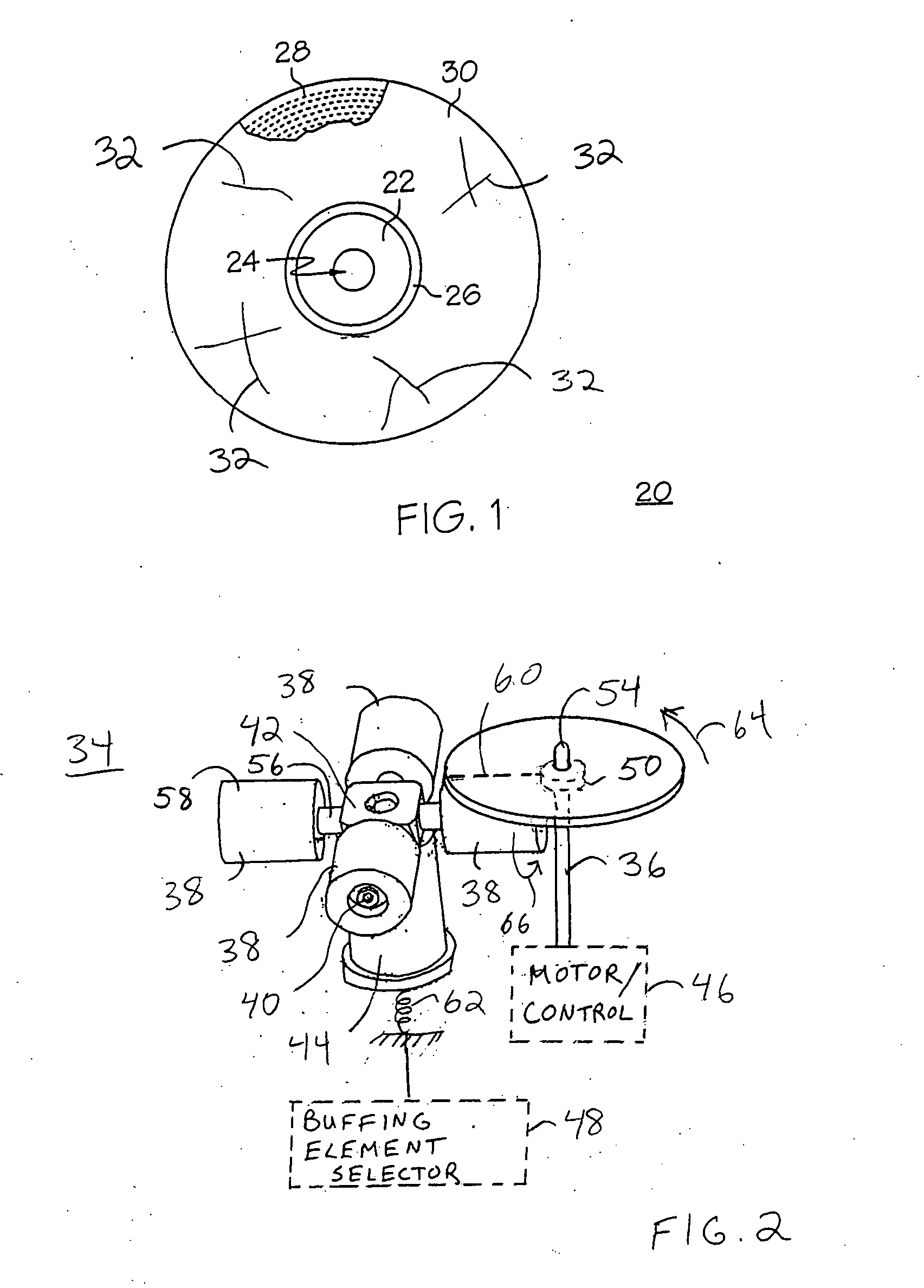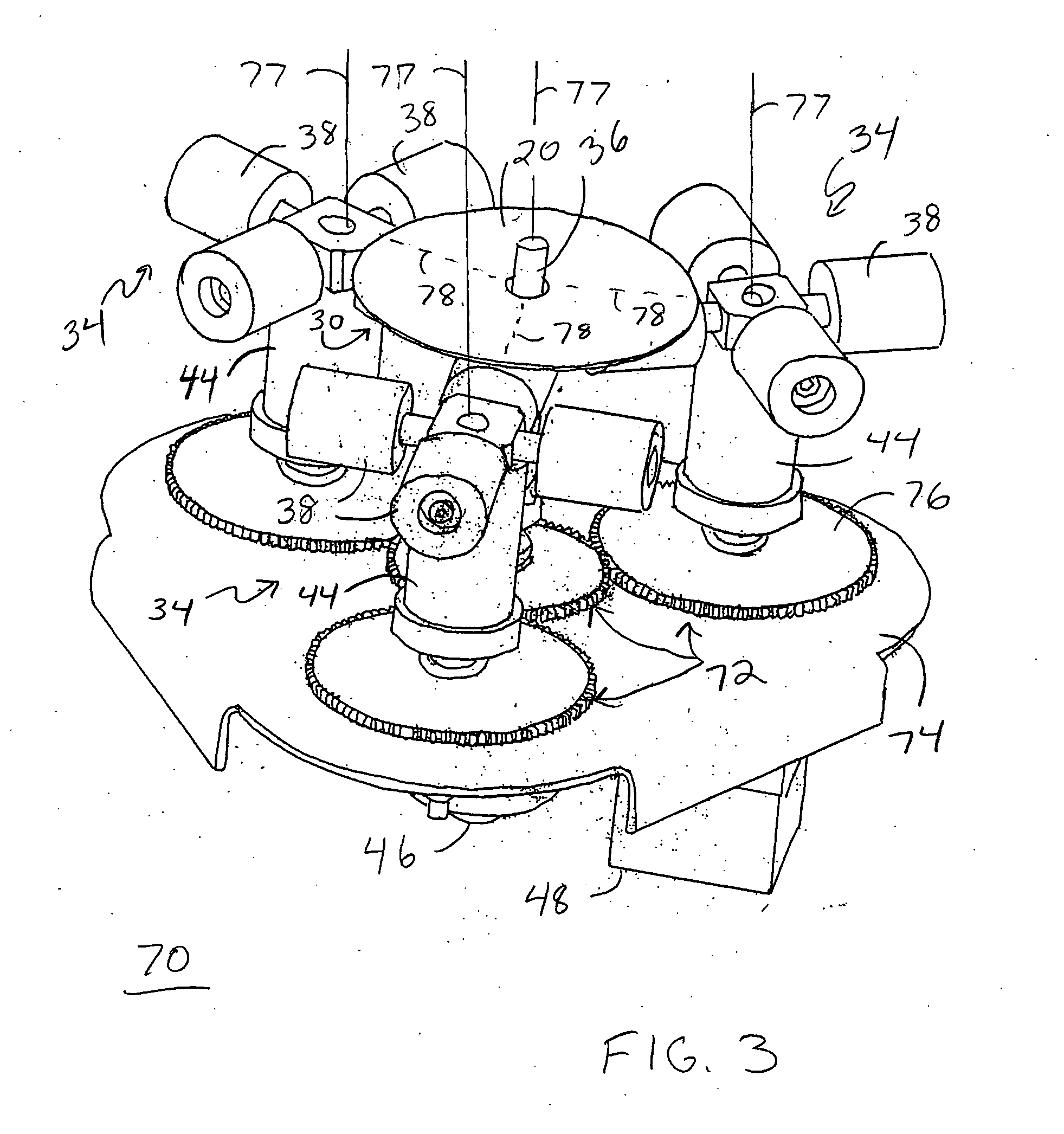Buffing head and method for reconditioning an optical disc
a technology of optical discs and reconditioning heads, which is applied in the direction of photosensitive materials, carpet cleaners, instruments, etc., can solve the problems of preventing the player from reading the data correctly, affecting the playback quality and visual appearance of optical discs, and many used discs cannot be resold. , to achieve the effect of facilitating use, restoring both the playback quality and the visual appearance of optical discs, and effective scratch removal
- Summary
- Abstract
- Description
- Claims
- Application Information
AI Technical Summary
Benefits of technology
Problems solved by technology
Method used
Image
Examples
Embodiment Construction
[0029]FIG. 1 shows a diagram of an optical disc 20. Optical disc 20 may be a compact disc, digital versatile disc (DVDs), CD-ROM, recordable CD (CD-R), re-writable CD (CD-RW), a game disc, and the like. Optical disc 20 generally includes a center section, or clamping area 22, located about a center hole 24 of disc 20. Surrounding clamping area 22 is a narrow text band 26 typically used to identify the manufacturer. Clamping area 22 and text band 26 do not contain encoded data. A data layer 28 lies outside of text band 26. Data layer 28 is arranged in spiral tracks and is covered by a protective surface 30. Disc 20 is shown with a portion of protective surface 30 removed to show the underlying spiral arranged data layer 28. In addition, disc 20 is shown with surface imperfections, such as, scratches 32, in protective surface 30 that render disc 20 unplayable or visually unappealing.
[0030] In general, when disc 20 is undamaged, the laser beam of the disc playback equipment enters dis...
PUM
| Property | Measurement | Unit |
|---|---|---|
| work surface | aaaaa | aaaaa |
| speed | aaaaa | aaaaa |
| movement | aaaaa | aaaaa |
Abstract
Description
Claims
Application Information
 Login to View More
Login to View More - R&D
- Intellectual Property
- Life Sciences
- Materials
- Tech Scout
- Unparalleled Data Quality
- Higher Quality Content
- 60% Fewer Hallucinations
Browse by: Latest US Patents, China's latest patents, Technical Efficacy Thesaurus, Application Domain, Technology Topic, Popular Technical Reports.
© 2025 PatSnap. All rights reserved.Legal|Privacy policy|Modern Slavery Act Transparency Statement|Sitemap|About US| Contact US: help@patsnap.com



